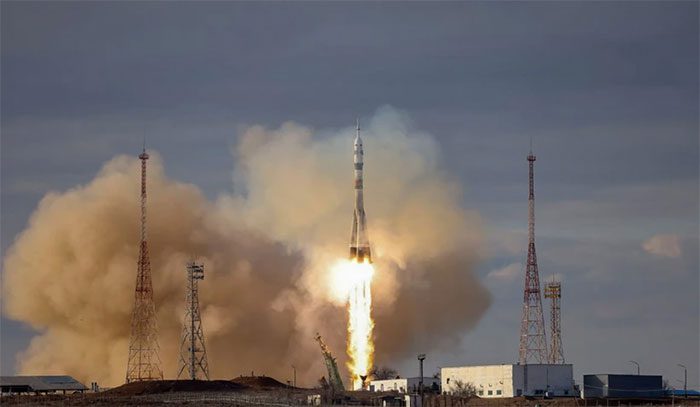The development of a plasma rocket engine will allow the Russian Federation to secure a leading position in technology within this field and reach new heights in space exploration activities.

The Russian Soyuz MS-25 spacecraft was launched from the Baikonur spaceport in Kazakhstan on March 23. (Photo: AFP/TTXVN).
The press office of Russia’s state-owned nuclear corporation Rosatom announced on April 3 that Rosatom scientists have developed a plasma accelerator – the “heart” of the prototype plasma rocket engine intended for interplanetary missions, which will enable Russia to achieve new heights in space exploration.
The statement confirmed: “The plasma accelerator with an external magnetic field has been created for the prototype plasma rocket engine, which boasts a higher thrust specification (at least 6 N) and specific impulse (at least 100 km/s). The average power of such an engine operating in periodic pulsing mode can reach up to 300 kW.”
The announcement evaluated that the results of creating the plasma rocket engine “with a power of several hundred kW in the future will allow the Russian Federation to secure a leading position in technology within this field and reach new heights” in space exploration activities, “performing interplanetary flights as well as facilitating regular cargo exchanges between Earth and the Moon.”





















































